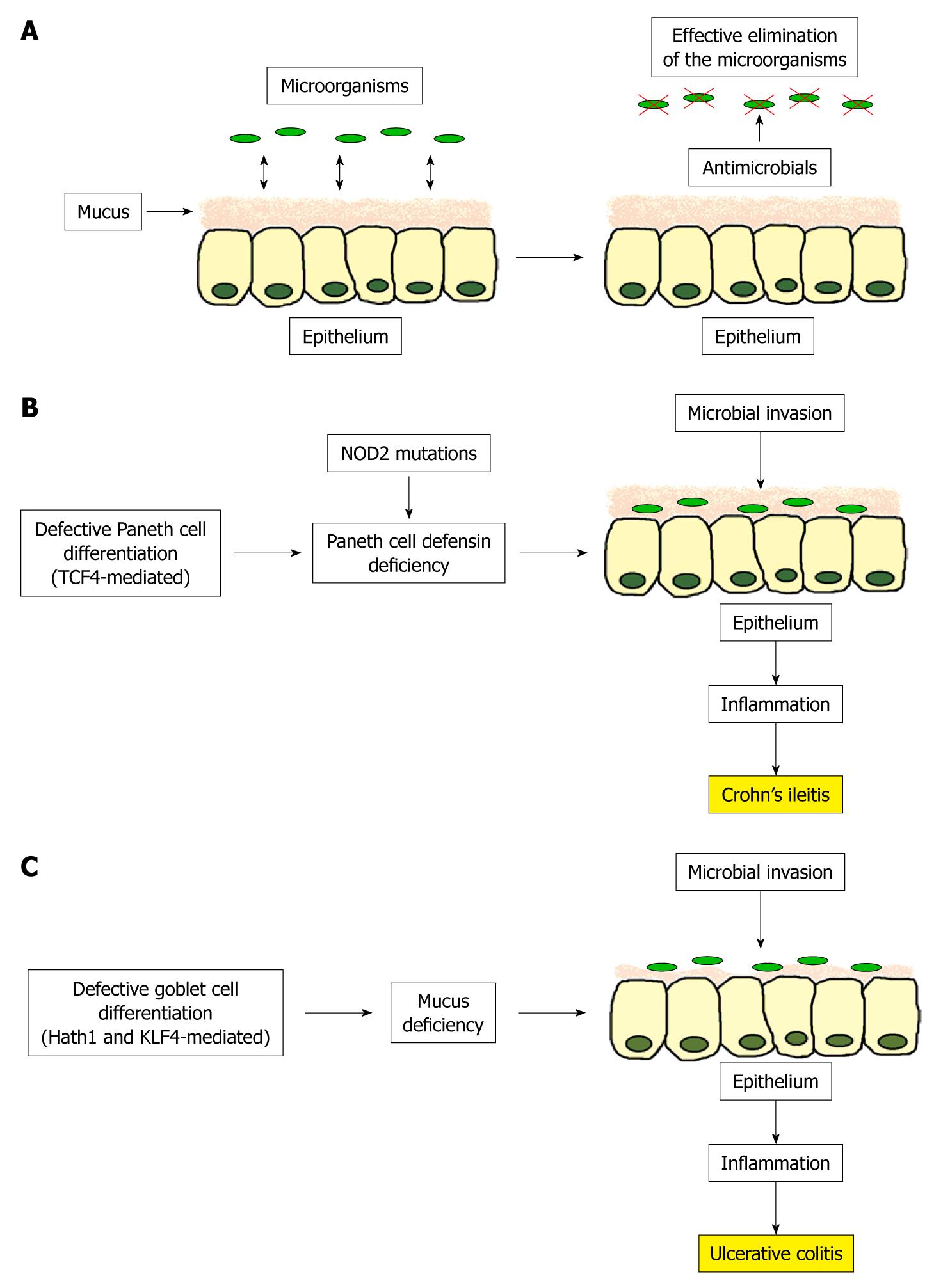Copyright
©2011 Baishideng Publishing Group Co.
World J Gastroenterol. Jul 21, 2011; 17(27): 3198-3203
Published online Jul 21, 2011. doi: 10.3748/wjg.v17.i27.3198
Published online Jul 21, 2011. doi: 10.3748/wjg.v17.i27.3198
Figure 1 Proposed model for the pathogenesis of ileal Crohn’s disease and ulcerative colitis.
A: In the healthy ileal and colonic mucosa, luminal microbes are sufficiently controlled by an adequate secretion of antimicrobials peptides and a sufficient mucus layer; B: In ileal Crohn’s disease, defective Paneth cell differentiation mediated by a reduction of the Wnt transcription factor TCF4 leads to a decreased Paneth cell defensin secretion, especially in case of NOD2 mutations. This allows the luminal microbes to attach and invade in the mucosa causing inflammation; C: In ulcerative colitis, a defective goblet cell differentiation based on a missing induction of the transcription factors Hath1 and KLF4 results in mucus deficiency enabling the luminal microbes to invade the mucosa and trigger inflammation.
- Citation: Gersemann M, Stange EF, Wehkamp J. From intestinal stem cells to inflammatory bowel diseases. World J Gastroenterol 2011; 17(27): 3198-3203
- URL: https://www.wjgnet.com/1007-9327/full/v17/i27/3198.htm
- DOI: https://dx.doi.org/10.3748/wjg.v17.i27.3198









